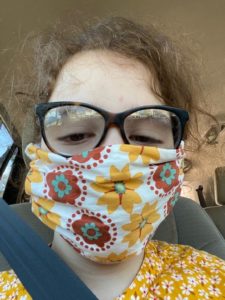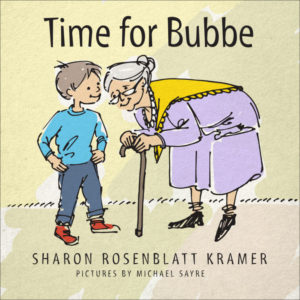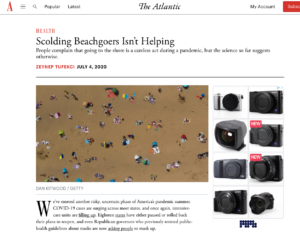Saturdays with Sophomores: Anja Finds a Role Model
March 12, 2021 • 3 Comments • Posted in careers/jobs for people who are blind, guest blog, politics, public speaking, writing With many of the seniors in my Zoom memoir-writing classes away on Spring Break now,so I am pleased to have 14-year-old Anja Herrman as a guest blogger today. I got to know Anja very well when she was nine years old and learning at home during a casting program (casts on both legs from her hips down to her ankles). She was schooled at home for two months back then, and I was her at-home writing tutor. Many of her completed assignments were published as guest posts here on our Safe & Sound blog, and you can read this post from 2016 to learn how and why she had all her posts back then published under the pen name DJ Mermaid. A disability activist, Dj Mermaid is in high school now and goes by her real name.
With many of the seniors in my Zoom memoir-writing classes away on Spring Break now,so I am pleased to have 14-year-old Anja Herrman as a guest blogger today. I got to know Anja very well when she was nine years old and learning at home during a casting program (casts on both legs from her hips down to her ankles). She was schooled at home for two months back then, and I was her at-home writing tutor. Many of her completed assignments were published as guest posts here on our Safe & Sound blog, and you can read this post from 2016 to learn how and why she had all her posts back then published under the pen name DJ Mermaid. A disability activist, Dj Mermaid is in high school now and goes by her real name.
by Anja Herrman
Marie Curie. Madeline Albright. Rosa Parks. Michelle Obama. Just a few of the role models I’ve looked up to in my fourteen years of life, all for different reasons: their perseverance, courage, bravery and strength, to name a few. As a young girl, I had these women to emulate and to champion.
There’s just one problem. While these women are all incredible in their own right and this is not to be dismissed, none of them openly identify as disabled. Growing up, whenever I looked for role models to help guide me along in my journey from childhood to adolescence, I never felt like I had people who “got me.” None of them understood the deep nuances of my life, so the “guidance” they provided for other pre-teens never rung true for me. These women existed, I just couldn’t find them, even though I spent a long time searching.
What to do? Well, if I couldn’t find any role models, I told myself, then I’ll be a role model, both for me, but most importantly, those who come after me. I was nine when I made this resolution, and over the past half decade (wow, I’m old!) I’ve been working on this promise to myself: to be a good role model and make the world more accessible and equal for people with disabilities. I want to forge a path that, if I’m lucky, others may choose to follow.
One such opportunity arose almost exactly a year ago (curse you, COVID, for drying up all of my speaking opportunities!) when I was asked to be a keynote speaker at an International Women’s Day event in Chicago. The speech was supposed to focus on advocacy and the disability community. Okay, piece of cake, I thought. The catch? The speech also had to be tailored to the business community. Which, in hindsight, makes sense, since it was hosted at an advertising firm.
But here’s the thing: I had absolutely no idea how to do that. Hence, for the very first time in my life as a writer, I found myself in a battle against every writer’s worst nightmare: writer’s block. Intense pressure doesn’t help, but what would you expect from a girl who compares herself to a lauded Secretary of State, a First Lady who is the literal definition of an icon, a famed scientist and a civil rights pioneer?
So, to conquer the writer’s block, I went back to basics and wrote a speech explaining what right I had to be speaking up on that stage. Using what I’ve learned from my life as a disabled adolescent fighting for equality, I crafted what I thought was a good speech and then I moved on to something else. I put the speech on the back burner, letting it simmer in my subconscious like a soup. Instead, I worried about other tasks: mainly the French test coming up in a few days.
Pro Tip: Another surefire way to get writer’s block is by over-critiquing. Critiquing beyond the point of being constructive stifles ideas.
The event drew nearer. So near that before I knew it I was sitting in the passenger seat of our car putting my mascara on while my mom was driving, and my brother was playing some sort of game on his phone, probably Minecraft…is that even a thing anymore?
Looking back, it’s a miracle I didn’t poke my eye out with a mascara wand while going over my speech one last time.
We got out of the car, raced up to the event space and, thankfully, I had a half an hour before I had to speak. So begins all the pre-event tests like checking the ramp to make sure I don’t tip before I have to speak (can you think of anything more embarrassing?) and introducing myself to all the other speakers and wishing them luck.
Before I know it, it’s showtime!
All the way through my speech, I imagine a little tiny me, with her pigtails and AFO’s sitting in the audience, biting her lip with anticipation. I look out, and notice that tiny Anja is laughing at the funny parts, and solemn at the serious parts, which means everything is landing exactly as I wanted it to back when I was sitting at home in my ratty pajama top writing the speech.
I conclude the speech. Over the roar of applause, I look into my younger self’s eyes, and see that she’s proud of me, and I know that I’ve succeeded in my quest, to be the role model that I needed.
And, guiding another person down the path to their own definition of success, well, that feels pretty great too.
An earlier version of this post was originally published on the Easterseals National blog.



